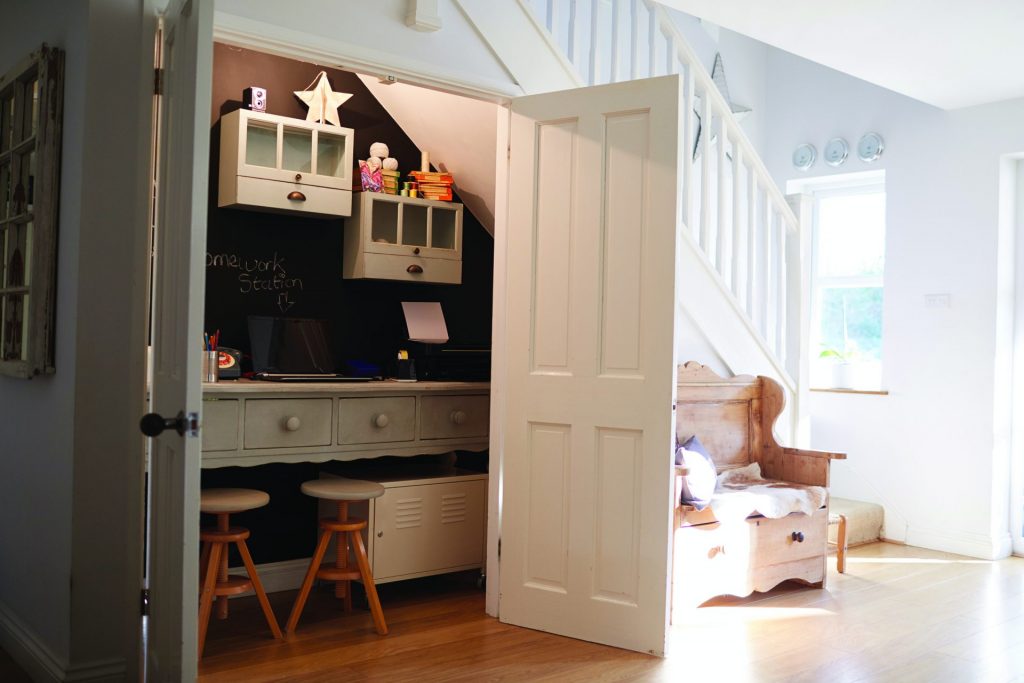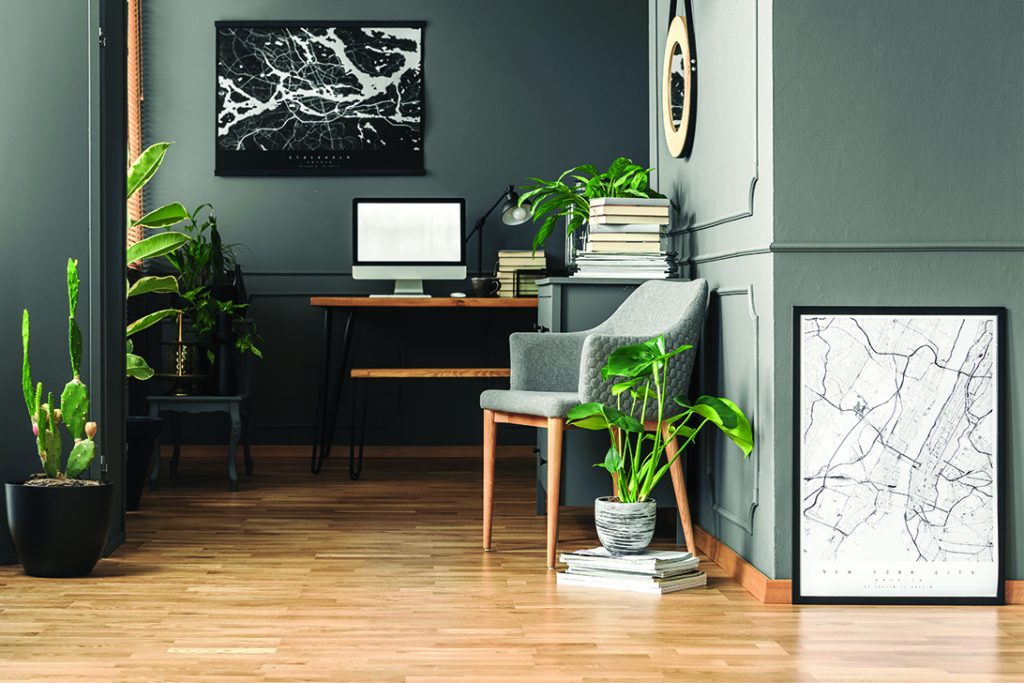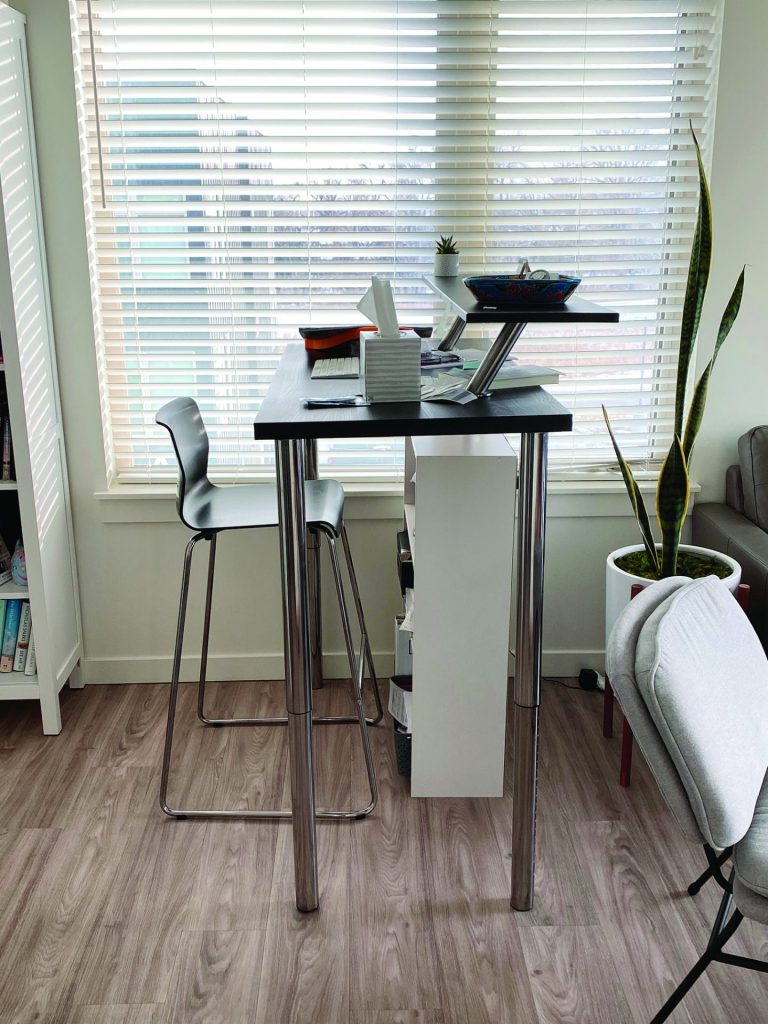Finding Room for a Home Office
01 Apr 2021
How to work from home when you think you don’t have the space for a home office.
By Lisa Truesdale
In April 2020, during the height of the pandemic, studies showed that a full 50% of Americans were working from home. Although that number dropped down to about 33% by October, working remotely is a trend that’s likely to continue. More than two-thirds of workers say they’d like to keep working from their home office indefinitely, and since many employers report enjoying lower operating costs and increased productivity, they’ll likely be on board with that plan.
But, demands on the home are at an all-time high, says interior designer Donna Pocci of Boulder’s Pocci Design Group. “We’re sharing the space with our family members for an unprecedented number of hours per day, using it as an office, gym, classroom, spa and more, so the need for space efficiency is more important than ever before.”
Working from home has its positives, but it also has its negatives. For instance, how can you get your work done when you don’t have a suitable space to do it in? With a little creativity, it’s easy to carve out a personal workspace, even if you don’t have a dedicated room for one. We gathered these professional tips on how to create a workspace that can work for you.

Master of Your Domain
Don’t dismiss the idea of using your bedroom as your home office, says architect David Biek of Boulder’s Arcadea Architecture. “Bedrooms, especially masters, are typically generous spaces with good daylight and often a deck, a balcony or backyard access,” he says. “Most people don’t spend a lot of time there when they’re not sleeping, so that’s a lot of wasted space.” Try these tips to make it more productive.
• Face a desk away from the bed to resist napping.
• Give yourself a window view and beneficial natural light.
• Even if you have good light coming through a window, use a task lamp to minimize eyestrain and headache.
• If possible, use a divider screen or curtain to separate the workspace from the sleeping area so you won’t feel the urge to check emails at bedtime.

Closets and Other Crannies
Closet offices, dubbed “cloffices,” are all the rage—all you need is a desk, a lamp and a chair.
• If you don’t want to just shove a desk into the closet, or if your desk won’t fit, mount floating shelves inside a closet to serve as your workspace. Arrange important files, office supplies and décor on the shelves and just wheel a chair in and out as needed.
• Designer Virginia Betty, of Betty + Co Design and Consulting in Boulder, suggests personalizing a cloffice with easy-to-apply, removable wallpaper.
• Remove closet doors for easy access and a more open feel. Or leave them on if you want your work to be out of sight and out of mind when you’re off the clock.
• To make a note or expression board, Pocci recommends painting the closet doors or walls with chalkboard paint.
• Other areas to consider: a foyer, a wide hallway, a bay window, a loft, a wall beneath a staircase.

Go Sit in the Corner
With the right furniture and accessories, it’s easy to turn empty corners in a living or dining room into a functional, stylish home office.
• Find a wedge- or triangular-shaped desk that easily slides into a corner. These types of desks don’t take up a lot of space and provide ample work surfaces. Or try a stand-up desk that goes up and down and doesn’t need a lot of room.
• Choose storage options like baskets, totes, floating shelves and tables with drawers underneath to help minimize clutter in a shared space. Or use a drop-leaf desk or hutch so you can simply close it up and walk away when the workday is over.
• Delineate the workspace with an area rug, a bookshelf divider or a folding screen.
• When creating an office space in an unfinished basement, hang tapestries on the walls to help define the area.

Cross Off the Kitchen
Resist putting your home office in the kitchen, most pros advise. Kitchens are a popular gathering spot for family members and pets, so expect to be distracted often if you set up shop there. There’s also the potential for sticky messes and the temptation to snack on any food in sight.
The easier it is for family members to access your workspace, “the more likely it is they’ll believe you’re not really working” and therefore disturb you, says Michelle Riviera of Michelle Riviera Interior Design in Boulder. Sound is another concern, she notes. “If you need to talk on the phone or have a virtual meeting, you don’t want to be heard and no one wants to hear you.”
If you do end up working at a kitchen island or table, Betty says, “Keep some attractive baskets or totes nearby so you can stash your files out of sight when happy hour comes around.”


Boulder Magazine editor Heather Shoning found a clever way to disguise her office in her Longmont living room. “I originally had my stand-up desk up against and facing the wall in my small apartment, but it was so uninspiring,” she says. “I’m a visual person, and it wasn’t working for me, so I moved the desk in front of a window that has amazing mountain views.” To minimize clutter, Shoning built a simple, distressed-wood enclosure that shields her workspace from view.












